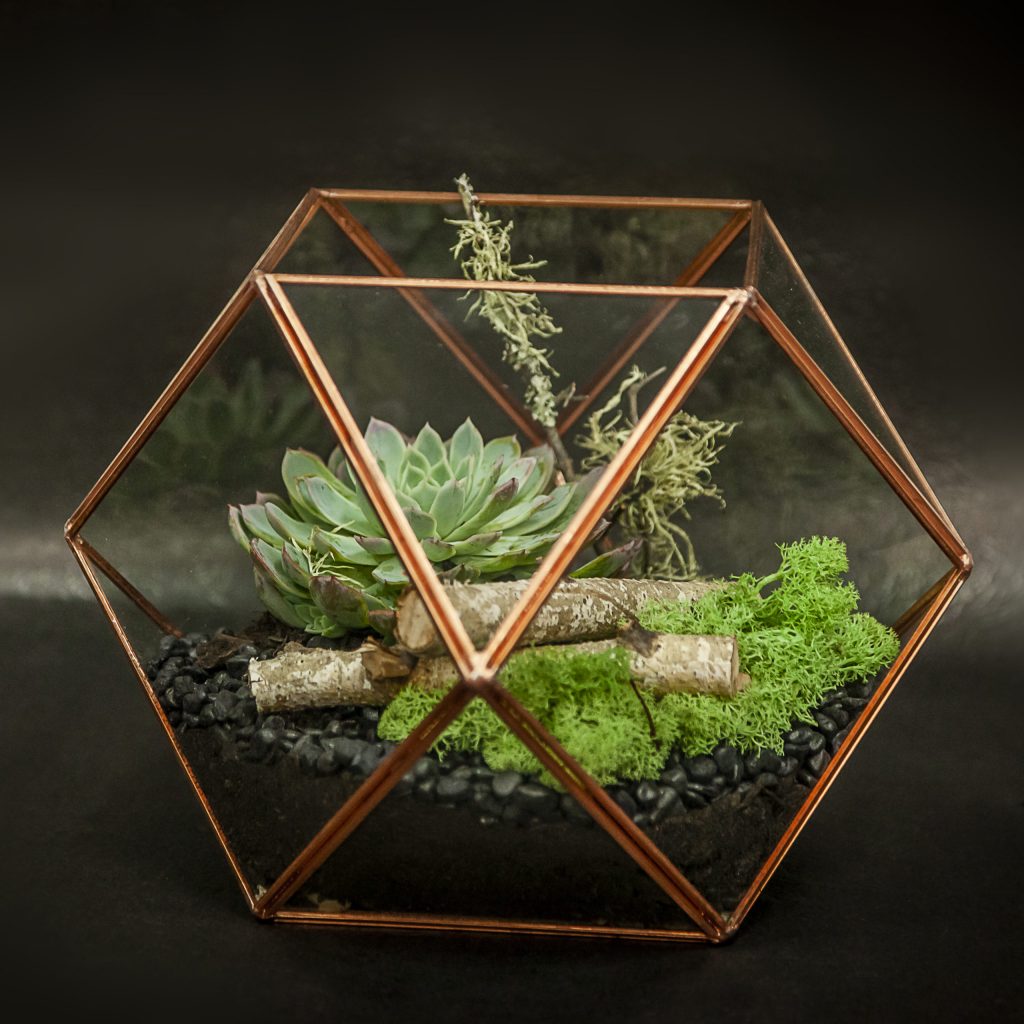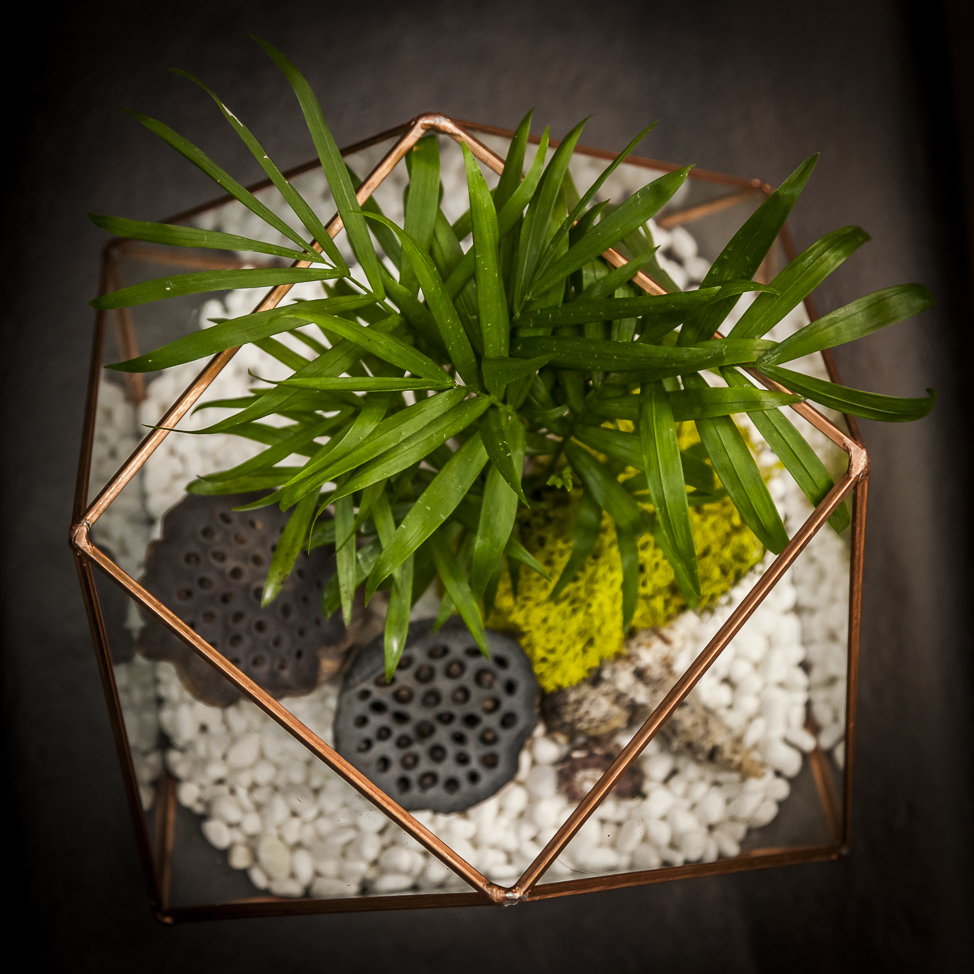
Home Terrariums: Creating Miniature Forests, Deserts and Swamps
How nice would it be to have a stretch of forest or a swamp, all with appropriate forms of animal life in your own living room or den?
Nothing says it’s impossible.
You can bring this inspiring wonder of nature to your home by setting up and stocking a small terrarium –an enclosure for keeping land or swamp plants and also often animals indoors.
Doesn’t it sound like a miracle to have “forests” with trees four inches tall, flowering “meadows” and mysterious “swamps” all to yourself?
Well, let’s take a look at how to create your own miniature forest, desert or swamp.
The “How-To”

The best container for any type of terrarium is a glass aquarium. First lay down a foundation about an inch thick, of pebbles, glass marbles or flowerpot fragments on the bottom of the terrarium. This foundation will provide drainage. If you wish to build up a mountain at one end of the terrarium, you should have a somewhat deeper foundation. The foundation of rocks and pebbles not only ensures proper drainage, but it will enable you to see whether you are giving too much or too little water. You will also be able to observe the growth of roots and the inevitable appearance of green algae.
How to Prepare a Miniature Forest?

To start a miniature forest, go to the woods and cut out a moss-covered section of the ground, just large enough to fit in your terrarium. Lift up the carpet like section with a trowel or spade and wrap it carefully in aluminum foil, waxed paper or moistened newspapers for the trip home.
Also, try to dig up some forest soil and put it in a separate container. When you are ready to install your forest, set a layer of peat moss directly over the foundation of pebbles, marbles or flowerpot fragments.
Next, put a thin layer of forest soil over the peat moss and then set your living carpet in place. Make a glass or plastic cover. If water condenses on the sides of the terrarium, place one or more matchsticks under the cover to raise it a fraction of an inch.
A particularly attractive carpet of vegetation consists of thick, luxuriant moss, young ferns and a variety of other small plants, including tree seedlings. If there are acorns or other seeds or small bulbs or underground stems in your forest, so much the better. Do not be alarmed if it attracts millipedes, pill bugs, small caterpillars, spiders and crickets.
Sometimes after your forest is in place, hordes of tiny wingless white insects will appear and will begin to creep under fallen leaves, scurry about on the ground and limp nimbly. These are likely to be springtails.
Trust me, they are completely harmless. In fact, they will help to keep your forest in good shape since they eat only dead and decaying leaves, stems and other fragments.
The most colorful animals that will thrive in your forest-floor terrarium are the coral-pink efts or newts, often found in woods as they make their way gingerly across the moss. Other salamanders and small frogs will also get along quite well, at least for a time.
These amphibians generally require living prey such as insects, earthworms, centipedes and spiders. However, with enough patience you may induce them to accept a strip of raw meat or a dead insect that you jiggle in front of them. Crickets will often survive in your forest terrarium. They will appreciate a lunch of cake, fruit, bread slightly moistened with milk and many other things that you would eat yourself.
Now, if you want to create a miniature desert or a miniature swamp, you can follow the second part of this article series for more information.

2 thoughts on “Home Terrariums: Creating Miniature Forests, Deserts and Swamps”